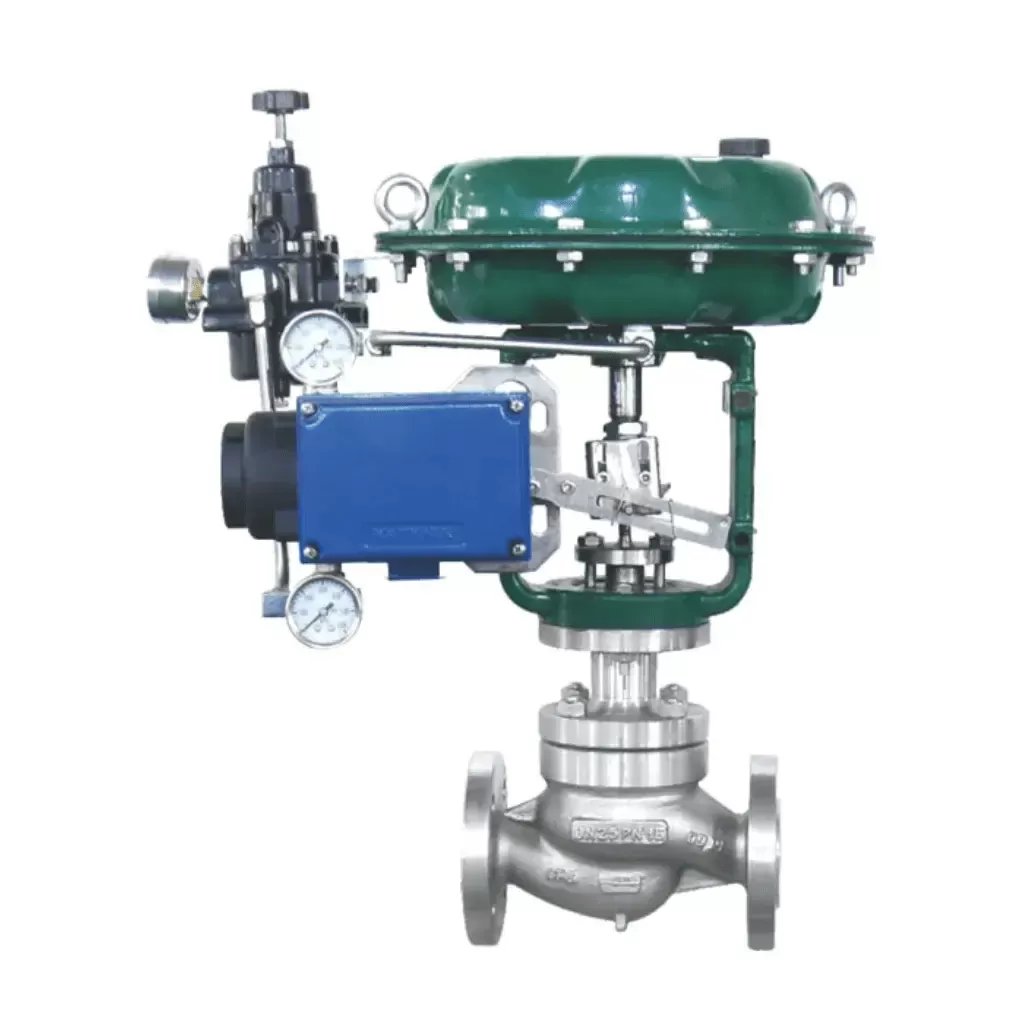Notifications

6 minutes, 24 seconds
-81 Views 0 Comments 0 Likes 0 Reviews

We are a leading control valve manufacturer in China, delivering high-quality valves and control actuators designed to meet a wide range of industrial applications.
In process automation and fluid control, choosing the right control valve is essential to achieving operational efficiency, safety, and performance. Among the many valve types used in industry, pneumatic control valves and self-operated control valves often invite comparison due to their distinct mechanisms and application areas. Understanding their working principles, strengths, limitations, and ideal use cases helps engineers and operators make well-informed choices.
This article provides an in-depth comparison between pneumatic and self-operated control valves, covering their operation, design considerations, performance, and typical applications.
A pneumatic control valve uses compressed air as its energy source to modulate fluid flow, pressure, temperature, or level. It typically consists of a valve body paired with a pneumatic actuator. A control signal—commonly 4–20 mA or 0.2–1 bar—is sent from a central system like a DCS (Distributed Control System) or PLC (Programmable Logic Controller) to a positioner, which adjusts the actuator accordingly. The actuator moves the valve plug or disc to regulate the process.
Key Features:
Requires external compressed air and control signal
Responds rapidly with high precision
Common in dynamic, automated process systems
Self-operated control valves function without external power or control signals. They harness the energy of the process medium itself—usually pressure or temperature—to drive valve operation. Equipped with sensors such as diaphragms or bellows, these valves automatically adjust flow based on changing process conditions.
Key Features:
Operates autonomously using process fluid energy
Simpler design with fewer components
Suited for static or low-adjustment applications, especially where utility infrastructure is limited
| Aspect | Pneumatic Control Valve | Self-Operated Control Valve |
|---|---|---|
| Power Source | External compressed air + control signal | Process fluid pressure or temperature |
| Control Accuracy | High (±0.3% to 0.5%) | Moderate to low (±5% to 10%) |
| Control Signal | Remote, dynamic via DCS/PLC | Local, mechanical adjustment |
| Adjustment Flexibility | Real-time remote setpoint changes | Manual, on-site adjustment only |
| Installation Complexity | Requires air supply, control wiring, and infrastructure | Simple installation, minimal infrastructure |
| Maintenance Requirements | Periodic actuator, positioner, and air system upkeep | Minimal maintenance; occasional diaphragm checks |
| Typical Applications | Complex, automated, frequently adjusted processes | Static control in remote or infrastructure-poor sites |
1. Power Source & Control Method
Pneumatic valves depend on external compressed air and electronic or pneumatic control signals, enabling remote and automated operation.
Self-operated valves utilize the energy within the process medium itself, making them ideal where external power or air is unavailable.
2. Control Accuracy
Pneumatic valves provide fine control suitable for precision processes such as chemical dosing or tight temperature regulation.
Self-operated valves offer coarser control, acceptable for pressure reduction or relief in less demanding systems.
3. Adjustment Flexibility
Pneumatic valves support on-the-fly setpoint changes from control rooms or automation systems.
Self-operated valves require manual adjustment of spring tension or settings, limiting flexibility.
4. Installation and Maintenance
Pneumatic valves need more complex installation with air lines and cabling; regular maintenance is essential.
Self-operated valves are simpler to install and maintain, making them preferable for remote or low-maintenance sites.
5. Design & Layout Considerations
Pneumatic valves allow versatile installation orientations and piping arrangements.
Self-operated valves need specific layouts, such as correct sensor placement and condensate protection, to function reliably.
Pneumatic Control Valve Use Cases:
Chemical and petrochemical plants
Power generation systems (boilers, turbines)
Centralized HVAC and water treatment
Automated industrial processes requiring frequent adjustment
Self-Operated Control Valve Use Cases:
Pressure-reducing stations
Steam supply regulation in heating units
Lubrication and gas pipelines in remote locations
Systems lacking power or air supply
Opt for Pneumatic Control Valves if:
High control precision and responsiveness are needed
Automation infrastructure is in place
Remote monitoring and frequent adjustments are required
The process fluid has challenging characteristics (e.g., corrosive, viscous)
Opt for Self-Operated Control Valves if:
The process is stable with infrequent control changes
No access to power or compressed air
Cost-effectiveness and low maintenance are priorities
Installation is in remote or inaccessible areas
Pneumatic and self-operated control valves each play indispensable roles tailored to specific process needs. Pneumatic valves shine in automated, dynamic environments requiring precise, responsive control. Conversely, self-operated valves provide reliable, simple, and maintenance-friendly solutions where infrastructure is limited and control demands are basic.
Selecting the right valve involves evaluating control accuracy, adjustment needs, infrastructure availability, and installation conditions. Aligning valve choice with operational requirements ensures optimized performance, safety, and efficiency.Know more about Google SEO Directory

